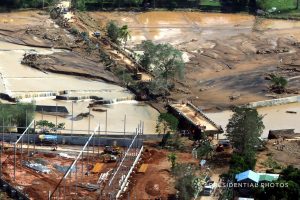
By Beth Pinsker
NEW YORK (Reuters) – In the lead-up to the conference agreement for the U.S. Tax Cut & Jobs Act released on Friday, there were too many moving parts for most Americans to know how it would affect them.
Until the bill is voted into law, the various provisions are still a moving target, but taxpayers now have a better sense of the real math of what it means to them.
Here is an update on what some of the key issues would mean to your wallet:
* EDUCATION
Graduate students pleaded with Congress not to adopt the U.S. House of Representatives’ proposal to make tuition waivers count as taxable income. In the end, the conference bill left that provision out.
The final bill still allows for individuals to deduct up to $2,500 in student loan interest and retains the current selection of higher education tax credits.
Teachers can continue to deduct up to $250 in supplies. Employees can still receive tuition without claiming it as income.
However, the bill changes the rules for the use of contributions to 529 college savings plans. In the past, the funds could only be distributed for higher education expenses. The final bill allows for $10,000 a year to be taken for each child’s K-12 expenses.
* CHARITABLE DEDUCTIONS
The charitable deduction was never going to go away, but experts predict many fewer people will itemize deductions under the new rules, which almost double the standard deductions and get rid of personal exemptions.
People who expect not to itemize their taxes in the future should think about making major donations before Dec. 31 to capture as many tax advantages as they can.
The compromise in the tax bill to double the estate tax exemption also would affect charitable giving because fewer wealthy people will need to donate assets to avoid going over the limit and sticking their heirs with a tax bill.
* CHILD TAX CREDITS
The conference bill settles on a $2,000 per child deduction, with $1,400 of it refundable to people with no income tax liability. The deduction is now phased out at a much higher income level.
These credits will help offset the tax bill’s removal of personal exemptions, which would hit families with children hard.
* MEDICAL DEDUCTIONS
There is good news for those worrying that the tax overhaul will do away with the itemized deduction for medical expenses.
The conference bill not only keeps the deduction, it also makes it available for expenses above 7.5 percent of adjusted gross income for the next two years, rather than the recently established 10 percent threshold.
* ALIMONY
Get ready for a flood of divorces in 2018. The final bill does away with a tax deduction for paying alimony and with the need for those receiving alimony to claim it as income, but it delays this until 2019.
Those who were rushing to get divorced by Dec. 31 can take a deep breath. But as the news sinks in, expect couples where one spouse is anticipating alimony to file for divorce sooner rather than later, or face tough negotiations on how much he or she might get.
* STATE AND LOCAL TAXES
The compromise in the final bill is that filers will be able to claim $10,000 in some combination of state and local taxes, including real estate taxes. The cap on mortgage interest was bumped down from $1 million to $750,000.
There has been a lot of worry that the proposed changes would dampen home sales because it will change the math on affordability. While the final bill ended up better for homeowners than expected, there are still lingering questions about its impact.
* BRACKETS AND AMT
For those on the lower end of the income scale, the change in brackets will probably not be top of mind, at least until the Internal Revenue Service sorts out the final tax tables and starts to adjust withholding rates, probably sometime in late winter.
Wealthy Americans are getting somewhat of a mixed bag, however. The top rate is dropping to 37 percent, but the Alternative Minimum Tax remains.
While this sounds like something to mourn, the AMT might not have as big an impact as people generally believe.
* RETIREMENT SAVINGS
When the tax overhaul process started, the way we save for retirement was on the table for big changes, including to workplace 401(k) retirement savings plans. In the end, however, Congress left it all pretty much alone.
(Editing by Lauren Young and Lisa Von Ahn)










